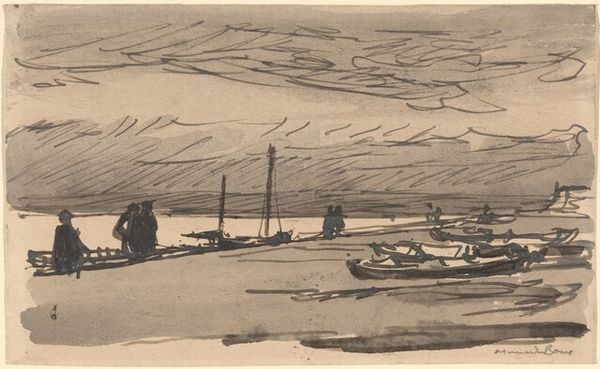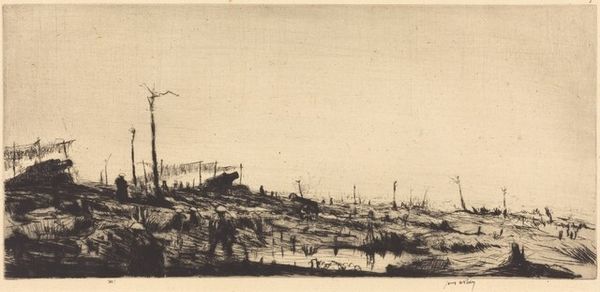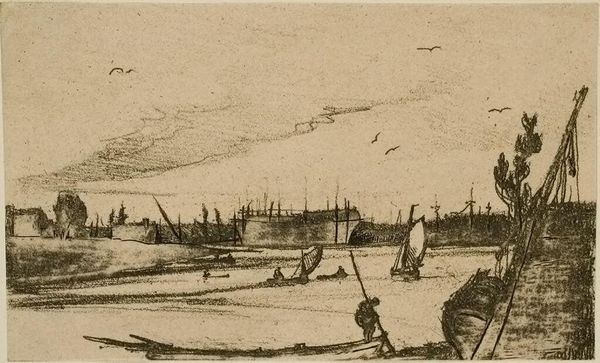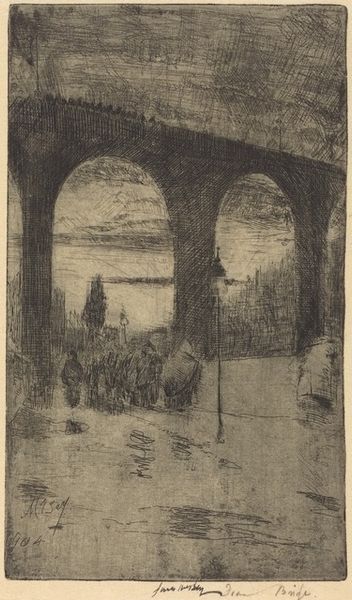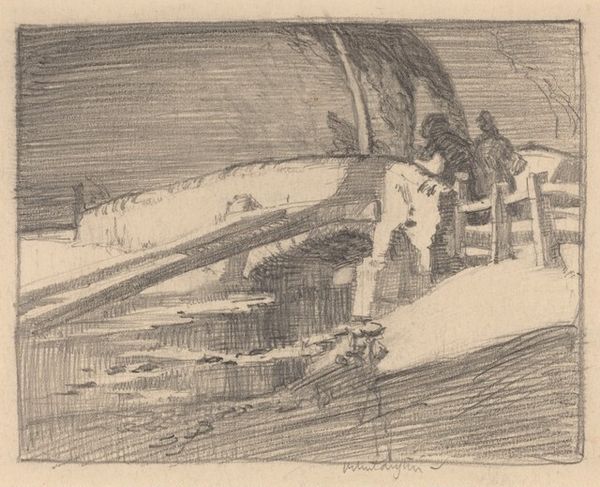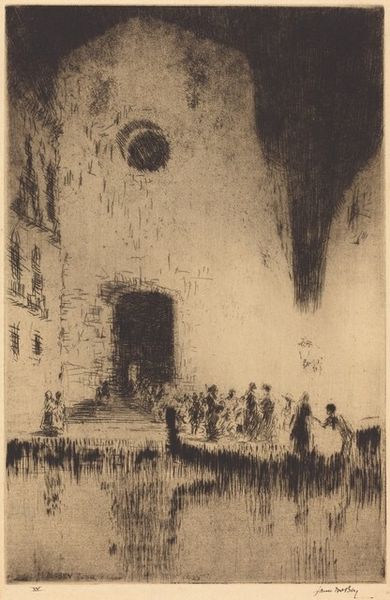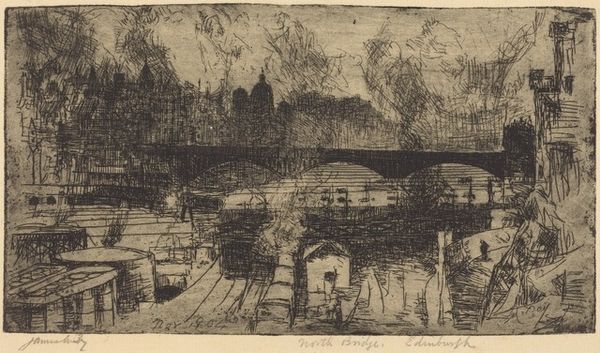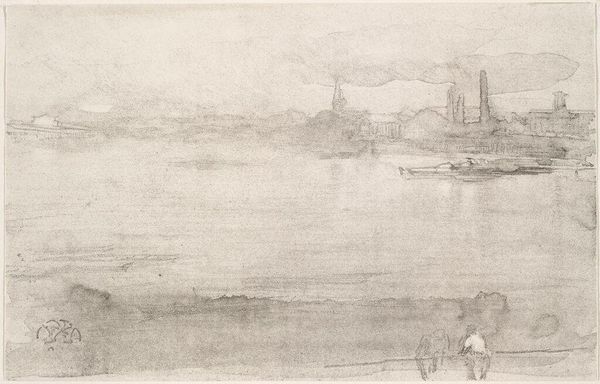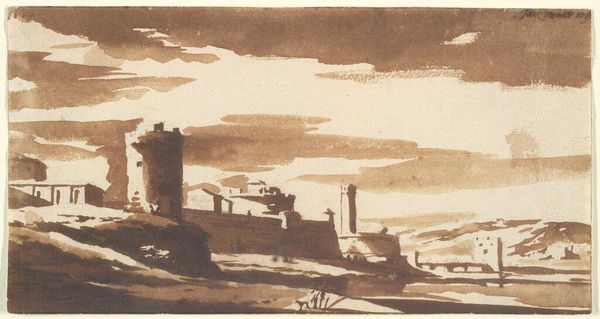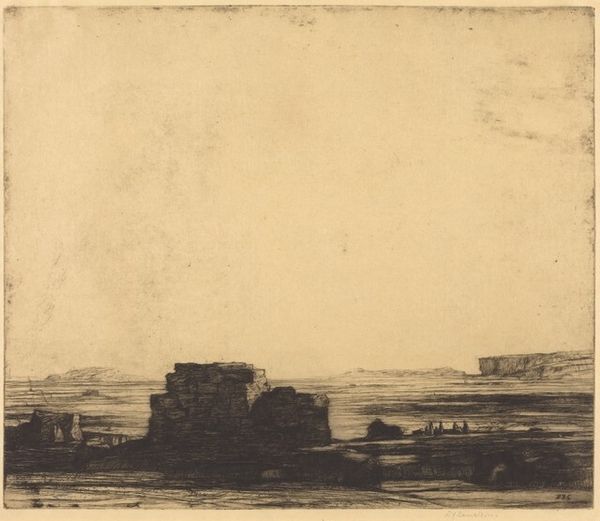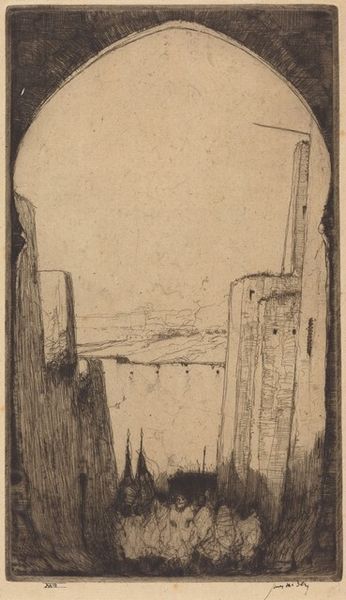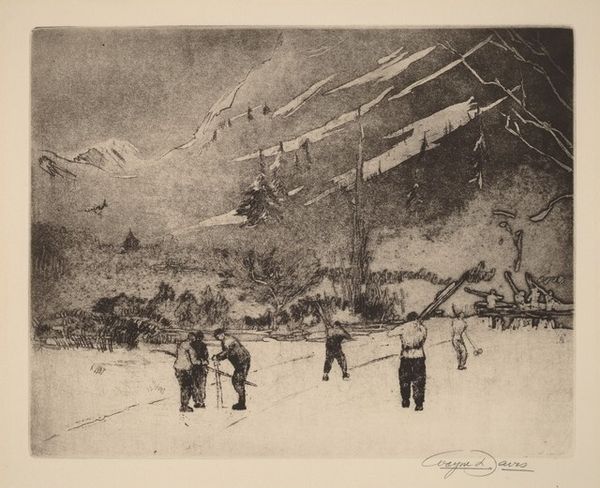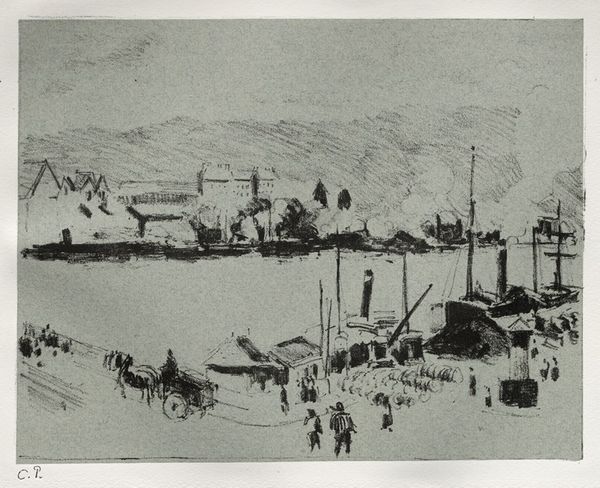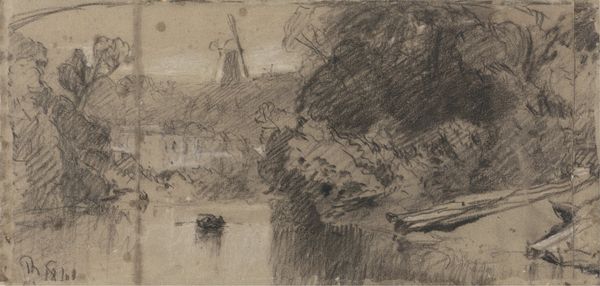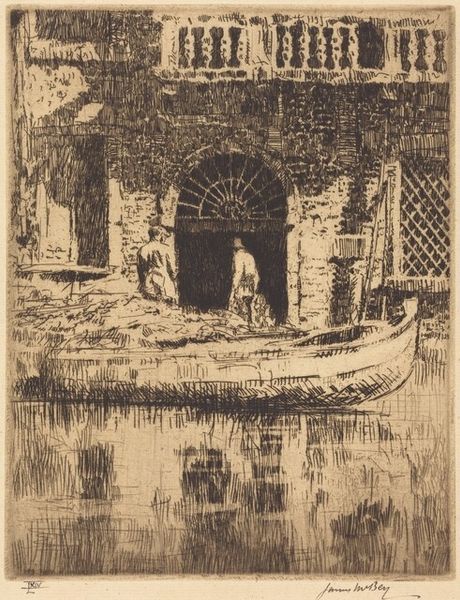
oil-paint, impasto
#
impressionism
#
oil-paint
#
landscape
#
oil painting
#
impasto
#
ashcan-school
#
cityscape
#
genre-painting
#
mixed media
#
watercolor
Copyright: Public domain
Editor: So, here we have Robert Henri’s "Nocturne" done with oil paint and some sort of mixed media. I get a real sense of isolation and stillness looking at it. What jumps out at you? Curator: The painting’s muted palette and use of impasto create a heavy atmosphere that is typical of the Ashcan school and reminds us how deeply Henri was influenced by their rejection of academic art in favor of depicting everyday life. Consider what it meant to portray the working class in the dark, obscured from prosperity during that time. Who had access to visibility? Who didn't? Editor: It’s true, I see a focus on ordinary people within a rather grim scene. Were they trying to make a social commentary by focusing on darkness, on nocturnal environments? Curator: I think Henri uses the "nocturne" setting as a means of questioning the romanticism associated with similar paintings by artists such as Whistler. Note the subtle ways Henri hints at class differences through the clothing of his figures. Look at the almost abstract treatment of light, or lack thereof. It begs us to contemplate the socio-economic hierarchies embedded within seemingly ordinary settings. Editor: So it's not just a pretty picture of the night, but an active engagement with social issues! I see it differently now. Curator: Exactly! It's a call for dialogue between aesthetic experience and lived reality, urging us to think about whose stories are valued. I find myself asking who gets to participate in the "nocturne"? Who is reflected and who is not? Editor: It makes me want to explore more art with a critical eye, considering the historical context and cultural narratives at play. Curator: Indeed! Art provides unique means for cultural critique and activism, urging us towards more inclusive representations of the world.
Comments
No comments
Be the first to comment and join the conversation on the ultimate creative platform.
